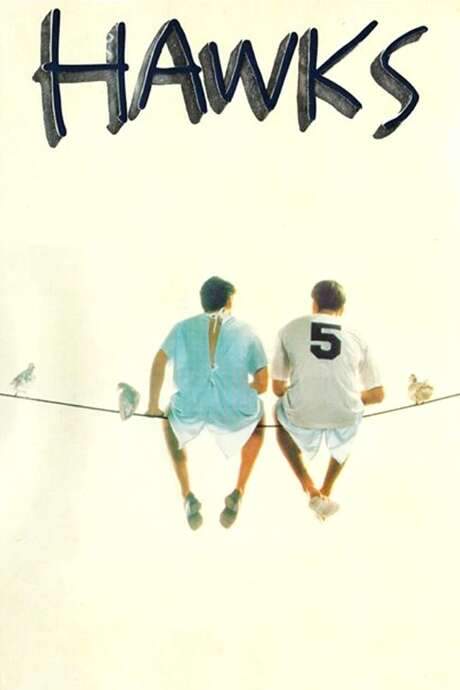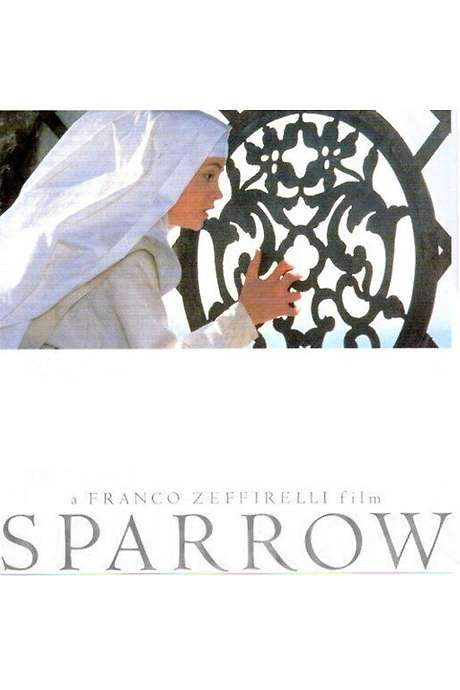
The Hawks and the Sparrows
Year: 1966
Runtime: 85 mins
Language: Italian
Director: Pier Paolo Pasolini
Pasolini’s off‑beat comedy treats weighty subjects with whimsy, following a father and his son as they wander through an allegorical landscape accompanied by a loquacious bird. The bird delivers sharp social and political commentary, turning their stroll into a contemplative satire on modern life.
Warning: spoilers below!
Haven’t seen The Hawks and the Sparrows yet? This summary contains major spoilers. Bookmark the page, watch the movie, and come back for the full breakdown. If you're ready, scroll on and relive the story!
The Hawks and the Sparrows (1966) – Full Plot Summary & Ending Explained
Read the complete plot breakdown of The Hawks and the Sparrows (1966), including all key story events, major twists, and the ending explained in detail. Discover what really happened—and what it all means.
Totò and his son Ninetto Davoli wander through the streets and countryside around Rome, a journey that blends quiet humor with a stark look at struggle. Their stroll leads them to witness a body being carried from a house after a murder, a small moment that opens up a larger world of ambition, poverty, and memory. The pair’s walk is interrupted by a talking crow, who appears with intertitles that frame it as a left-wing intellectual of the kind that existed before Palmiro Togliatti’s death, setting up a tone that is at once philosophical and playful.
The Crow then recounts the story of Fra Ciccillo and Fra Ninetto, two Franciscan friars who are sent by Saint Francis to preach the Gospel to the hawks (the powerful) and the sparrows (the weak). After persistent misfires, the friars discover the language of birds and manage to deliver the commandment of love to the hawks and to the sparrows separately, but they cannot persuade the two groups to love each other. Saint Francis explains the relationship between the two factions from a Marxist perspective, inviting them to persevere in their mission even as the social divide remains painfully clear.
Back in the present, the journey continues with the Crow still in tow. Totò and Ninetto encounter a sequence of encounters that satirize different social strata. Landowners who order them off their land when they are caught defecating, a family living in absolute poverty with no food who face eviction, and a group of traveling actors who embody many of society’s margins—women, LGBTQ people, the elderly, racial minorities, and the disabled—persuade the pair to push the group’s Cadillac for them. The narrative juxtaposes humor with hardship, turning each small episode into a meditation on power, need, and solidarity.
A later segment shows a wealthy man waiting for the money Totò owes him, a contrast to the earlier demand for rent. The film then shifts to a montage of news footage, including the funeral of Palmiro Togliatti, which punctuates the satire with a real-world moment of political significance. The odyssey reaches a shocking close when, after a fateful encounter with a prostitute, Totò and Ninetto kill and eat the Crow, exposing a grim turn that reframes the entire journey as a brutal, unsettling moral parable.
Throughout this bold voyage, Pasolini threads social critique with fable-like fantasy, using the humor and warmth of its two leads to explore class tension, ideology, and the human appetite for meaning. The film’s opening mood is intensified by Ennio Morricone’s score, highlighted by a sung credits sequence performed by Domenico Modugno, which gives the movie a cantata-like welcome that lingers long after the final frame.
This layered narrative invites viewers to read the shifts between the fable told by the Crow and the larger, often harsher realities that Totò and Ninetto encounter on the road. It remains a distinctive blend of satire, myth, and social commentary, anchored by the enduring chemistry between its two stars and the provocative ideas that Pasolini threads through every scene.
Last Updated: October 09, 2025 at 11:19
Unlock the Full Story of The Hawks and the Sparrows
Don't stop at just watching — explore The Hawks and the Sparrows in full detail. From the complete plot summary and scene-by-scene timeline to character breakdowns, thematic analysis, and a deep dive into the ending — every page helps you truly understand what The Hawks and the Sparrows is all about. Plus, discover what's next after the movie.
The Hawks and the Sparrows Timeline
Track the full timeline of The Hawks and the Sparrows with every major event arranged chronologically. Perfect for decoding non-linear storytelling, flashbacks, or parallel narratives with a clear scene-by-scene breakdown.

Similar Movies to The Hawks and the Sparrows
Discover movies like The Hawks and the Sparrows that share similar genres, themes, and storytelling elements. Whether you’re drawn to the atmosphere, character arcs, or plot structure, these curated recommendations will help you explore more films you’ll love.
Explore More About Movie The Hawks and the Sparrows
The Hawks and the Sparrows (1966) Scene-by-Scene Movie Timeline
The Hawks and the Sparrows (1966) Movie Characters, Themes & Settings
The Hawks and the Sparrows (1966) Spoiler-Free Summary & Key Flow
Movies Like The Hawks and the Sparrows – Similar Titles You’ll Enjoy
A Pigeon Sat on a Branch Reflecting on Existence (2015) Spoiler-Packed Plot Recap
For the Birds (2000) Full Summary & Key Details
For the Love of God (2007) Ending Explained & Film Insights
The Hawk and the Dove (1981) Full Movie Breakdown
Hawks (1988) Spoiler-Packed Plot Recap
Birds of a Feather (1931) Story Summary & Characters
Sparrows Are Birds Too (1968) Full Summary & Key Details
The Sparrow’s Fluttering (1988) Full Movie Breakdown
The Birds, the Bees and the Italians (1966) Story Summary & Characters
The Bird of Happiness (1993) Spoiler-Packed Plot Recap
Sparrows Can’t Sing (1963) Movie Recap & Themes
The Dancing Hawk (1978) Detailed Story Recap
Sparrow (1993) Ending Explained & Film Insights
Birds, Orphans and Fools (1969) Full Summary & Key Details
The Dove (1968) Detailed Story Recap

















